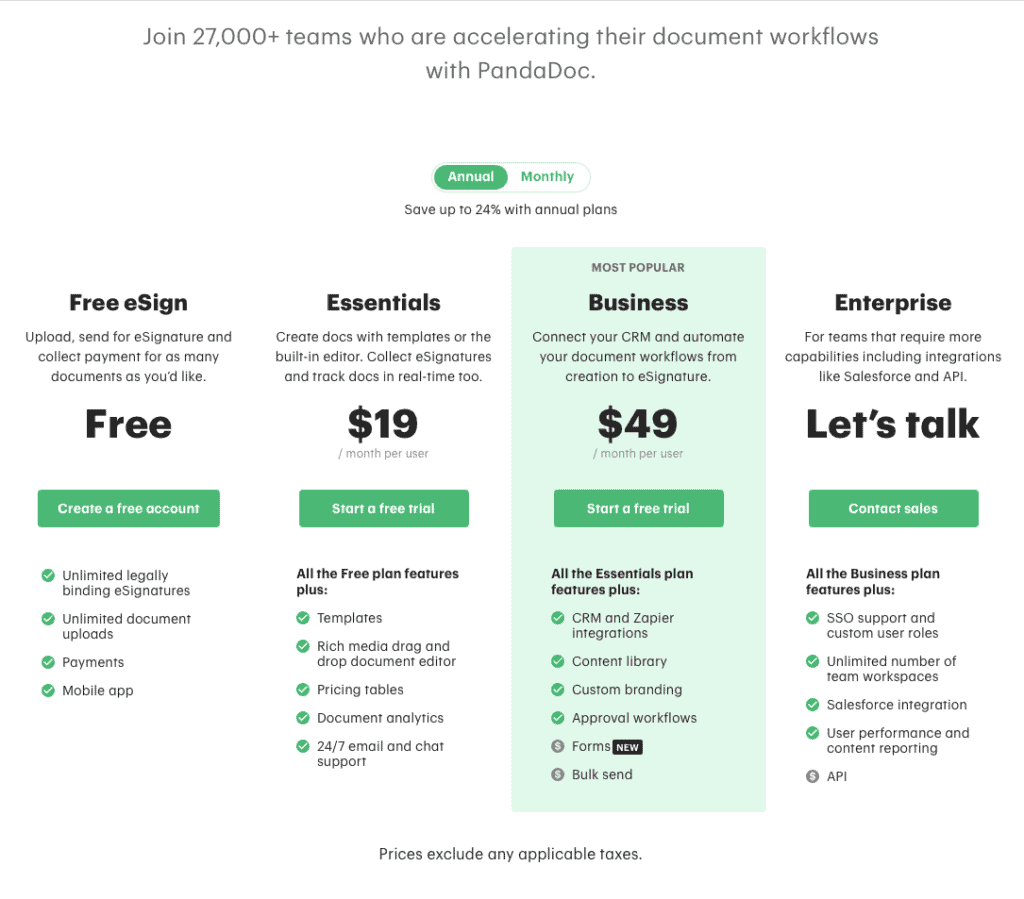PandaDoc has been in business for more than six years. And while it always had a 14-day free trial as part of its sales funnel, once the world stopped in March 2020, its product suddenly became essential for commerce to function remotely.
Within 48 hours, we decided to bring a freemium product to market. This sequence of events was pivotal in thrusting PandaDoc’s e-signature capabilities into the mainstream, with the remote office model acting as the genesis of internal and marketplace success.
In this article, we’ll review what the PandaDoc team learned from this experience launching our product-led strategy, focusing on:
- The three steps to finding our freemium product
- Three main lessons we learned
- What we learned from our mistakes
The Three Steps to Finding Your Freemium Product
Knowing which features should be accessible is one of the most challenging factors when choosing a freemium model, because you want to onboard users without cannibalizing your paid product.
But these three steps will unlock your product’s freemium potential in your product-led strategy.
Step #1: Provide something that works
Don’t create something “gimmicky.” Instead, create something that works. COVID-19 was unprecedented, and PandaDoc quickly realized that our freemium product was a big part of the customer value journey. And for it to be successful, it had to be meaningful.
When businesses quickly shifted to a remote platform, a freemium product that offered unlimited e-signatures became immediately necessary. So while we were setting the scope of our freemium product, the first thing we decided was to allow unlimited documents through the system for signatures.
Step #2: Differentiate your product
We quickly realized we needed to differentiate ourselves from PandaDoc competitors. To do this, we decided to include integrated payments as part of our core product. With COVID-19, getting paid was critical to the survival of small businesses. Hence, the integrated payment system in the freemium product helped accelerate the customer value journey.
Step #3: Define your paid features
Like many product-led businesses, we recognized that the company’s survival depended on our paid plans. So, our team decided that key features like templates, analytics, and integrations would remain separate from the freemium product.
Here’s what resulted:
As most of PandaDoc’s business comprises small-to-medium businesses (SMB), having templates, analytics, and integrations remain on paid plans proved to be an effective strategy. While our team did quite a bit of research into whether we should change the scope of our free plans, we ended up making no major changes since these plans were performing so well.
Three Main Lessons We Learned
Here are three lessons we learned at PandaDoc while launching our product-led strategy at breakneck speed in March of 2020.
Lesson #1: Don’t fear the freemium
The insecurity of self-cannibalization can be paralyzing, but the reality is that it can act more like an addition and accelerate the customer value journey than a product that overlaps. While you may have some overlapping, especially initially, it’s successful as long as you’re growing.
Lesson #2: Understand customer intent
The user type of a freemium customer versus a trial customer is quite different. The freemium product attracts users that have an immediate need. Trial users, meanwhile, are generally teams looking for solutions in their workflow processes — for them, it’s more of a business decision.
For freemium products, there’s an intent to use it right away, whereas, with trial users, there’s an intent to find a solution for workflows. Both freemium and trial have their place — and it’s essential to understand how each user's intent applies to your product.
Lesson #3: Keep it simple
Ensure you have a straightforward and consistent onboarding system that consists of a SaaS pricing page detailing your free plan alongside all your paid plans.

Initially, we used too many links, and users became confused or lost within three to four clicks. However, by streamlining and keeping things simple, we increased our conversion rates.
In this approach, less is always more. Make it simple for the user to understand their options and move on from there.
What We Learned from Our Mistakes
It can be difficult to anticipate every little detail when making the switch to freemium. Looking back on our journey at PandaDoc, we definitely wish we’d done some things differently to make things easier for our overall product-led strategy.
Here’s what we learned.
Product-Qualified Leads (PQLs)
As mentioned earlier, the user type between freemium and trial is quite distinct. Product Qualified Leads (PQLs) were initially introduced to PandaDoc from both the freemium funnel and main trial — something that confused our Sales teams.
As part of the cleanup to distinguish these two user types, we streamlined our user base by eliminating the self-assisted funnel from our freemium product. Instead, we made it easy to upgrade and unlock trial capability from directly within the freemium product. Then, from the trial experience, a user enters the regular funnel and becomes a PQL.
This differentiation took several months for us to define. We now realize it could have happened more quickly with specific independent experiments across both funnels.
Start segmenting earlier
The arrival of COVID-19 forced businesses to adapt at a faster pace than ever before. In the process, we tried to optimize right away in an effort to capitalize.
Don’t do this!
Instead, take a step back to:
- Study user behavior
- Study user profiles
- Go through your jobs to be done
- Conduct experiments
Following these steps will help you optimize more quickly based on user intent.
Don’t wait! Pursue freemium now
While there’s always some concern about potentially cannibalizing your business, it works for top freemium companies such as Zoom and Slack. And many companies don’t seem to get there fast enough.
While we certainly made mistakes along the way, there were also unexpected benefits to launching our freemium product:
- Firstly, it was a significant growth driver.
- Secondly, it opened channels with partners to roll out distribution — a key for integrations.
- Thirdly, it helped us realize and confirm the future is product-led growth.
In the 1990s, the only motion for selling software was direct. Since then, however, the direction has shifted toward freemium and trial experiences, especially in the last few years. Adopting a product-led strategy makes it easy for anyone to evaluate a product on a no-risk basis, no matter where they live. This accelerates the customer value journey — which in turn makes for prime PQLs.
As the future of the office model remains ambiguous in the COVID-19 era, there’s now a huge global opportunity to embrace product-led growth. This makes product-led growth an incredible opportunity for any company.
Are you moving towards a product-led strategy, but unsure if you're on the right path?
You're not alone.
SaaS founders typically lack confidence when pursuing a product-led strategy since there are so many unknowns. And choosing your free experience (i.e. free trial or freemium) plays a pivotal role in the success of your strategy.
That's why we created ProductLed Academy. This method has been used by hundreds of software companies to grow their self-serve revenue.
It’s helped a $4 billion behemoth company called Boomi transition to product-led growth, doubling their free to paid conversion rate and getting 10% of their customers to come from a self-serve motion.
It’s helped a small startup like Enzuzo double down on their onboarding which led them to double their free-to-paid conversion rate soon after re-launching their freemium model.
And it’s helped a medium-sized company like LucidLink focus its core messaging on one ideal user, increasing signups by 40%!
ProductLed Academy is structured to focus on each of these nine components:
- Vision: What is your company really good at?
- User: Who do you serve best?
- Model: How do you create a ton of value for your users to win?
- Offer: Have you crafted an irresistible free offer for your ideal users?
- Experience: Have you created an effortless path to value for your users?
- Pricing: Is it easy for users to upgrade without talking to anyone?
- Data: Do you know where users are getting stuck in your product?
- Process: Do you have a growth process that enables your team to build out experiments, prioritize the high-impact ones, and launch the ones that are easiest?
- Team: Is your team full of A players capable of taking you to the next level?
While you can have one or more of these dialed in perfectly, if you’re missing one of these key players, you’re going to have a hard time with growth.
If you're ready to break through to the next level and master your product-led strategy, be sure to check out ProductLed Academy.







